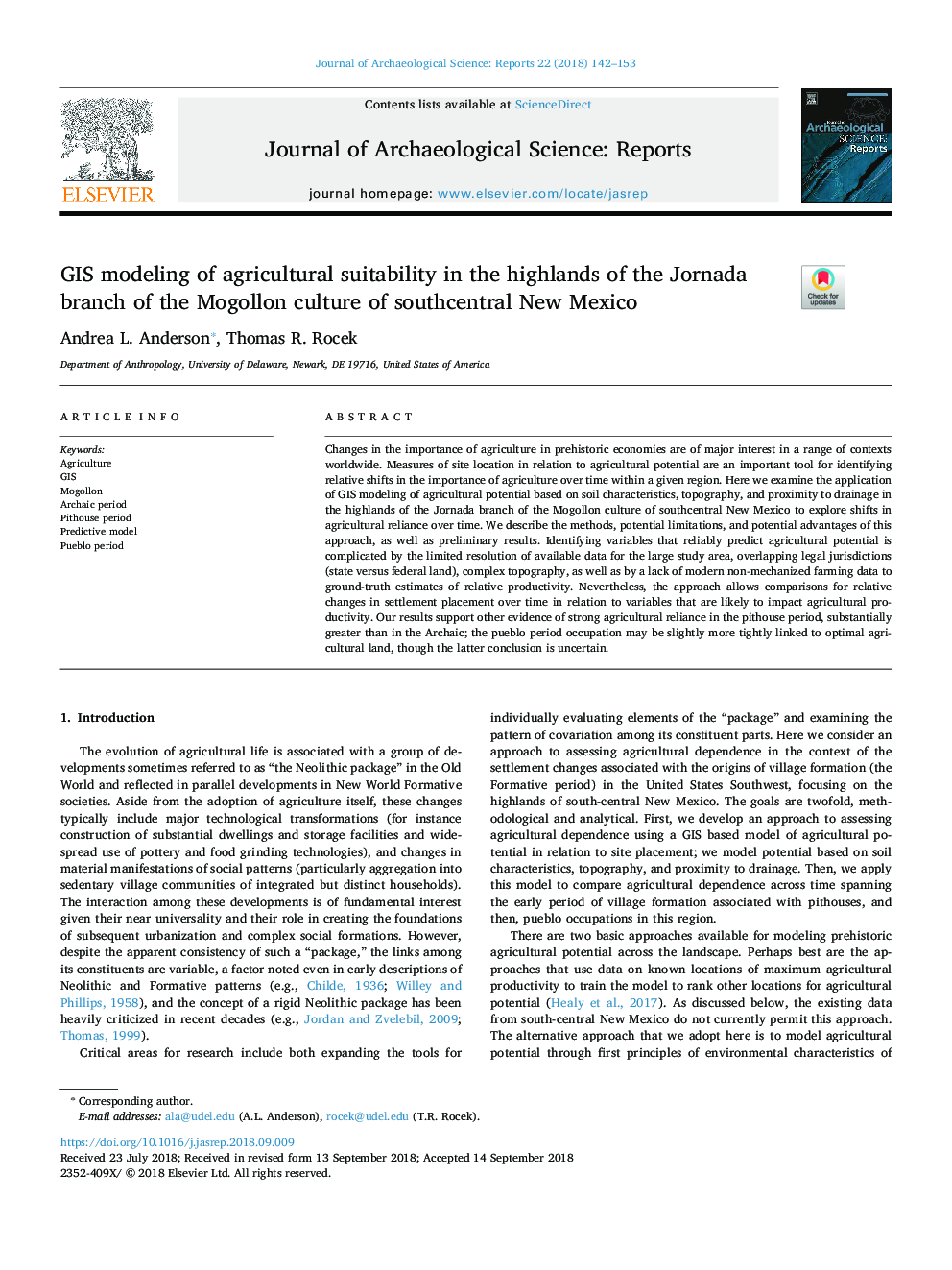| Article ID | Journal | Published Year | Pages | File Type |
|---|---|---|---|---|
| 11027554 | Journal of Archaeological Science: Reports | 2018 | 12 Pages |
Abstract
Changes in the importance of agriculture in prehistoric economies are of major interest in a range of contexts worldwide. Measures of site location in relation to agricultural potential are an important tool for identifying relative shifts in the importance of agriculture over time within a given region. Here we examine the application of GIS modeling of agricultural potential based on soil characteristics, topography, and proximity to drainage in the highlands of the Jornada branch of the Mogollon culture of southcentral New Mexico to explore shifts in agricultural reliance over time. We describe the methods, potential limitations, and potential advantages of this approach, as well as preliminary results. Identifying variables that reliably predict agricultural potential is complicated by the limited resolution of available data for the large study area, overlapping legal jurisdictions (state versus federal land), complex topography, as well as by a lack of modern non-mechanized farming data to ground-truth estimates of relative productivity. Nevertheless, the approach allows comparisons for relative changes in settlement placement over time in relation to variables that are likely to impact agricultural productivity. Our results support other evidence of strong agricultural reliance in the pithouse period, substantially greater than in the Archaic; the pueblo period occupation may be slightly more tightly linked to optimal agricultural land, though the latter conclusion is uncertain.
Related Topics
Social Sciences and Humanities
Arts and Humanities
History
Authors
Andrea L. Anderson, Thomas R. Rocek,
